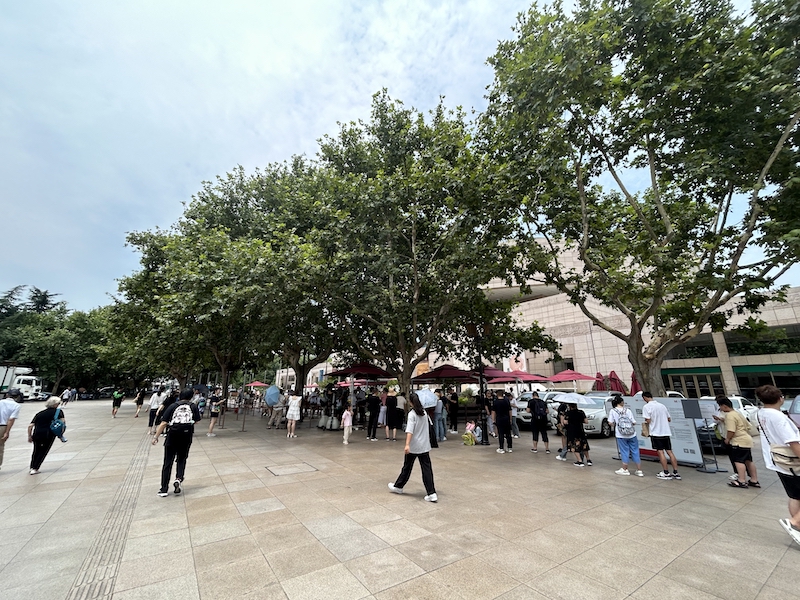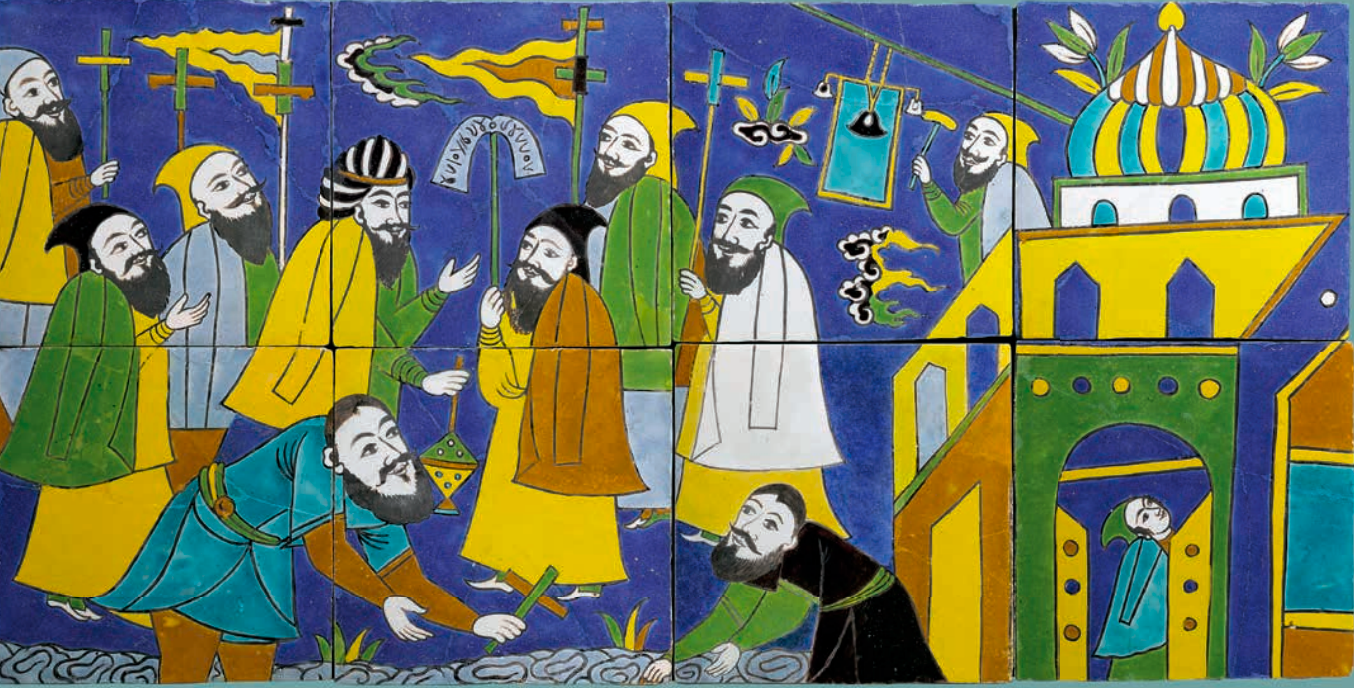
Under the scorching sun of midsummer, it is the summer vacation again. "Museum reservation difficulty" has frequently been on the hot search. Summer vacation is the peak travel season. "Museum reservation difficulty" is not only due to the demand for cultural tourism such as summer study tours and parent-child tours, but also closely related to the continued rise of "museum fever" in recent years. The reservation pages of top venues such as the Forbidden City, the National Museum, the Suzhou Museum, the Shanghai Museum People's Square Pavilion, and the Shaanxi History Museum are almost all "gray screens" and all are fully booked. When did these top museums implement a comprehensive reservation system? Is it possible to solve the dilemma of museum reservation difficulties?
The original intention of making reservations for visits was to control the flow of visitors to museums and ensure that visitors have a better visiting experience. However, as the number of cultural and museum visits continues to rise, the contradiction between visitors' visiting needs and museum flow restrictions has gradually become prominent, resulting in the problem of "difficulty in making museum reservations."
Popular museums: From waiting in line for hours to making reservations
Many visitors who are familiar with the Shanghai Museum still remember the queues there: for example, during the "British Museum 100 Objects Exhibition" at the Shanghai Museum in 2017, visitors began queuing at 6 a.m. and had to wait for three or four hours before they could enter the museum. At that time, the museum was forced to put up a "full" notice in the morning; and at the Suzhou Museum and the Shaanxi History Museum, some visitors had the impression that "there was not a single day without queues", and such queues during the high temperatures of the summer vacation were extremely painful.

The queue at the Shanghai Museum (The Paper)
Against the backdrop of the cultural and museum boom, especially after the epidemic, the appointment system has gradually emerged.
The Shanghai Museum's reservation system began on July 14, 2023. The announcement released on that day made it clear that from October 8 of the same year, the entire museum would implement a "full reservation system", and individual visitors would need to make reservations through the official website or WeChat public account 7 days in advance, and for the first time introduced a "no-appointment penalty mechanism" - accounts that failed to cancel their reservations twice in advance and did not actually arrive at the museum would have their reservation qualifications frozen for 30 days. This change marks the Shanghai Museum's shift from local flow restrictions (such as special exhibition reservations) to a normalized reservation system.
After the opening of the Shanghai Museum East Building in January 2024, the new building will continue this rule, and the two buildings will have independent reservation entrances, further strengthening time-sharing flow control. In March 2024, in order to curb scalpers from hoarding tickets, new rules were added: "limited to 5 reservations per building within 30 days" and "freeze for 60 days after 3 cumulative cancellations." The optimization on April 19, 2024 became a key turning point: the reservation opening period was extended from 7 days to 14 days, and an overseas individual visitor channel was opened on the English official website, supporting email registration and reservation, which significantly improved the convenience of international tourists.
Starting from September 15, 2024, the Shanghai Museum will implement a two-museum, two-system approach. The Shanghai Museum's East Museum has cancelled the reservation system and visitors can enter on a as-needed basis. It has been operating well for more than 10 months; but the People's Square Museum is still difficult to make a reservation for due to its limited capacity.
The reservation system of Suzhou Museum (main museum) began in April 2019, in conjunction with Suzhou's key scenic spots such as the Humble Administrator's Garden and the Lion Grove, and simultaneously implemented a real-name, time-sharing, full-reservation visit mechanism. This reform aims to solve the problem of tourist congestion during holidays in the Northeast Street area where the Suzhou Museum (main museum) is located, and to improve the visiting experience through refined diversion. In the summer of 2025, the main museum of Suzhou Museum will extend its opening to 20:00 and add night diversions, which will increase the success rate of reservations after 17:00 to a certain extent. At present, the two museums of Suzhou Museum are managed in a hierarchical manner with "one museum, one policy": the main museum still retains the reservation system due to limited space; the expanded venues such as the West Museum, the Folk Museum, and the Ancient Book Library do not require reservations and can enter the museum after passing security checks.

Suzhou Museum "Changwuzhi" exhibition site July 3, 2025
The National Museum's reservation system began in April 2019. After the implementation of the free opening policy for national museums in 2008, the average daily number of visitors to the National Museum increased tenfold, and the traditional reception model could no longer be sustained. In 2019, the National Museum officially implemented a real-name reservation system for all staff in different time periods, with a daily limit of 30,000 people. Reservations were made 1-5 days in advance through the official website, WeChat and other channels, and on-site reservation channels were reserved. This system was further upgraded during the peak period of "Cultural Museum Fever" in 2023: the reservation ticket release time was adjusted to 17:00 every day, the "refund without return to the pool" rule was implemented, and 425,000 risk accounts and 1.657 million high-frequency access IPs were banned. In April 2025, the National Museum launched a real-name authentication system for reservation accounts, requiring users to bind their ID cards and mobile phone numbers to block scalpers and virtual accounts from grabbing tickets at the source.

Interior view of the National Museum.
The reservation system of the Palace Museum began with daily flow restrictions and real-name ticket sales in 2015, and in 2017, online ticket sales were fully promoted to lay the foundation for digital management. However, the real strict "advance reservation system" ushered in a key upgrade in 2023: On November 1 of the same year, the Palace Museum implemented time-divided control, dividing daily tickets into two time periods: morning (entry until 12:00) and afternoon (earliest entry 11:00), and canceled on-site ticket sales. All tourists are required to make reservations 7 days in advance. Those who fail to enter after the time limit will be refused entry, and a "no-appointment penalty mechanism" is provided (no-appointment three times within 180 days will freeze the account for 60 days).
In the summer of 2024, the Palace Museum launched a manual ticket release strategy: a dedicated person will be on duty at 8 pm every night to slowly release 25% of the incremental ticket supply, extending the ticket grabbing window to 1 hour to avoid the situation of "selling out in seconds". At the same time, the countermeasure system was upgraded: travel agencies and individual ticket warehouses were isolated, and 90% of scalper machine requests were intercepted (80% of the malicious traffic accounted for 2.5 million requests per day). After the recent notice issued by the State Administration of Cultural Heritage, the Palace Museum added a fast reservation channel for minors.
The reservation system of Shaanxi History Museum (hereinafter referred to as "Shaanxi History Museum") has undergone a gradual process from local pilot to full implementation. In 2019, in order to cope with the pressure of passenger flow after free opening, Shaanxi History Museum implemented real-name reservation and staggered visits for the first time. On January 11, 2024, the newly opened Qin and Han Museum took the lead in implementing a 3-day advance reservation system on public holidays and statutory holidays (15 days in advance for the Spring Festival), and on weekdays, no reservation is required to enter the museum, marking a refined attempt at time-sharing control. January 14, 2025: The Shaanxi History Museum and the Shaanxi History Museum Qin and Han Museum will simultaneously implement a 5-day advance ticket release system, with tickets released at fixed times every day (17:00 for the main museum and 17:30 for the Qin and Han Museum), and on-site ticket sales will be cancelled. All tourists must make real-name reservations through the official WeChat public account. At present, it is still difficult to make reservations for the Shaanxi History Museum, but there are sufficient remaining tickets for the Qin and Han Museum.
Experts suggest "walking on two legs": leaving a passage for the audience
"The appointment system implemented by popular museums is conducive to improving cultural relics protection and visiting experience, but it cannot be a one-size-fits-all approach. Even the top museums can still combine appointments with on-site queuing," a former museum director told The Paper. "We can learn from the wisdom of leaving blank spaces in Chinese calligraphy and painting and gardens - for example, reserve 10%-20% of on-site tickets or queuing places every day, and release them at 10 a.m. and 2 p.m., so that some visitors who missed the appointment will no longer have to return to the site."

Shanghai Museum People's Square Pavilion
Wu Liyun, professor at the Institute of Chinese Culture and Tourism Industry of Beijing International Studies University, mentioned in an interview with China Tourism News that "through ticket reservations, the 'diversion' effect of time-slot reservations can effectively improve the problems faced by tourists when traveling during holidays, such as traffic difficulties, parking difficulties, and sightseeing difficulties. However, for popular museums, reservation measures and on-site ticket purchases should complement each other, 'walking on two legs', providing reservation channels and leaving room for on-site offline ticket purchases. A good division should be made between online and offline channels, and a 'one-size-fits-all' approach should be avoided."
"Just like the two sides of a coin, canceling reservations cannot solve the problem of difficulty in entering museums." Wu Liyun is worried that if popular scenic spots and museums cancel reservations, long queues will also lead to more "scalpers."
"In fact, we can appropriately learn from the dual-track system of overseas museums such as the British Museum, which combines reservations and queuing. This also tells us that flexibility and people-oriented service awareness are the keys to solving the reservation dilemma." A cultural and museum scholar told The Paper.
The difficulty in making reservations is essentially the result of the collision between the scarcity of cultural resources, technological alienation and the ideal of universal benefit. When cultural relics carrying thousands of years of culture are locked in a system that sells out in seconds, the solution may not be to build higher walls, but to open wider doors - as the State Administration of Cultural Heritage calls for: scientific evaluation, classified measures, and let technology return to its humanistic service nature.


